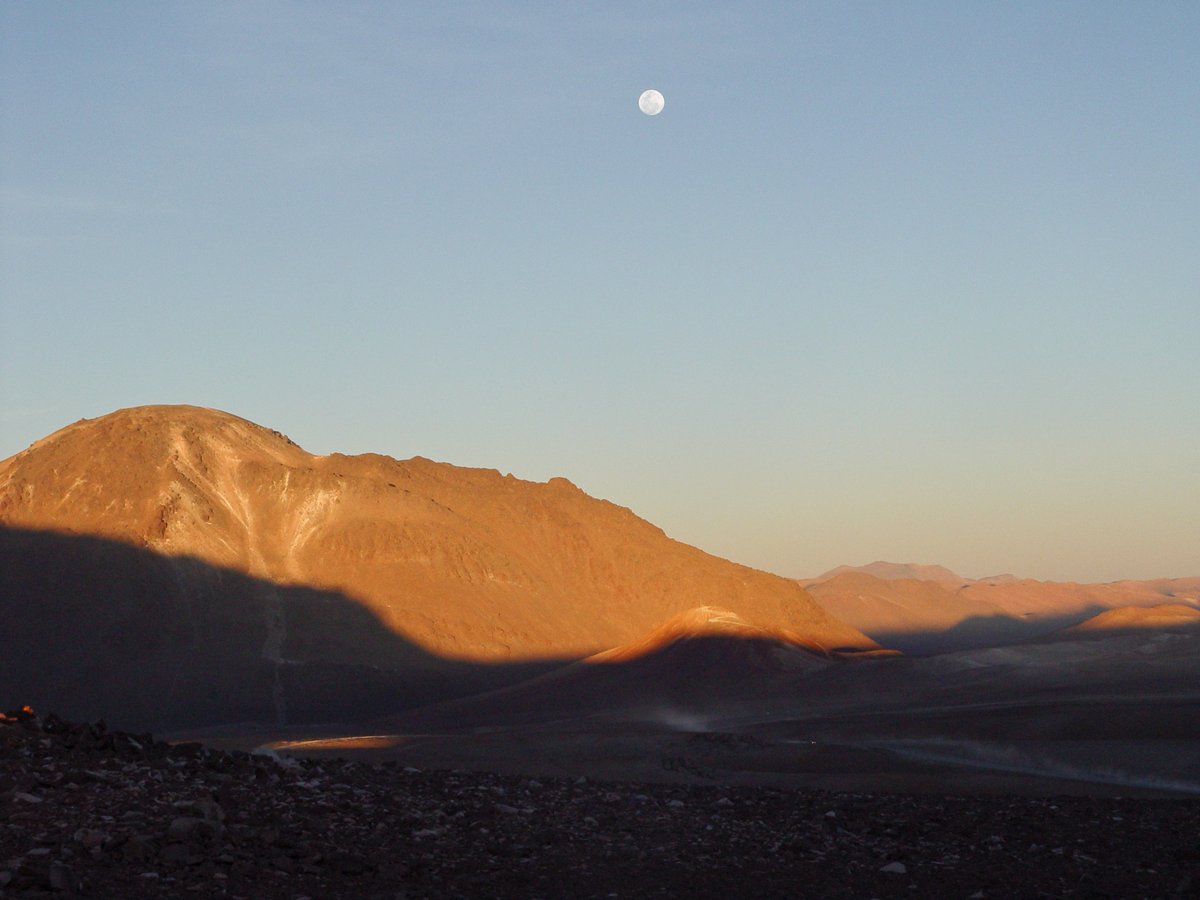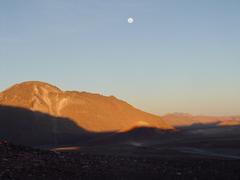
University of Tokyo Atacama Observatory: Visiting Hours, Tickets, and Travel Guide
Date: 14/06/2025
Introduction
The University of Tokyo Atacama Observatory (TAO) is perched atop Cerro Chajnantor at 5,640 meters (18,500 feet) in Chile’s Atacama Desert, making it the highest infrared astronomical observatory in the world. Built through the vision of Japanese astronomer Yuzuru Yoshii and operational since 1998, TAO enables pioneering research into galaxy formation, star birth, and planetary origins using its advanced 6.5-meter optical-infrared telescope equipped with state-of-the-art instruments such as MIMIZUKU and SWIMS.
While the summit itself is closed to the general public due to extreme altitude, visitors can engage with TAO’s astronomy mission via guided tours, educational programs, and remote telescope operations hosted in the nearby town of San Pedro de Atacama. This guide provides comprehensive information on visiting hours, ticketing, accessibility, local attractions, health and safety, and other practical tips to ensure a memorable experience in one of the world’s premier stargazing destinations.
For the latest information on tours and educational activities, refer to the TAO Project website and the San Pedro de Atacama Tourism Office.
Observatory Overview and Scientific Importance
TAO’s high-altitude location offers unmatched atmospheric clarity, making it ideal for infrared astronomy. Its scientific advances contribute significantly to our understanding of the cosmos, while its proximity to San Pedro de Atacama provides visitors with opportunities to learn about cutting-edge research in a spectacular natural setting. The observatory’s collaborations with other major facilities in the region, such as ALMA and the European Extremely Large Telescope, further cement its role as a central hub for astronomical discovery (Space.com).
Visiting Hours and Ticket Information
Base Facility Hours:
- Open to the public from 9:00 a.m. to 6:00 p.m.
- Guided tours and stargazing events are typically scheduled for late afternoon and evening.
Summit Access:
- Direct public access to the summit is not permitted due to health and safety concerns linked to the extreme altitude. All visitor engagement is conducted at the base facility in San Pedro de Atacama, situated at approximately 2,400 meters elevation (Wikipedia).
Tickets and Reservations:
- Tickets are required for tours and stargazing events and can be booked via the official TAO website or trusted local operators (Evendo).
- Advance booking is strongly recommended, especially during the new moon phase and peak tourist seasons.
Getting There and Accessibility
Location & Transport
- Nearest Hub: San Pedro de Atacama, 50 km southwest of the observatory.
- Nearest Airport: Calama (El Loa Airport), about 100 km from San Pedro de Atacama.
- From San Pedro: The TAO base is accessible by walking (30–40 minutes), cycling (15–20 minutes), or shuttle services provided by local tour operators. Shuttle tours are the most convenient and are advisable during high season (Evendo).
Altitude and Health
- The summit is at an altitude where acute mountain sickness is a serious risk. All public activities and tours take place at the base facility to ensure visitor safety (Healthline).
- Visitors should plan to acclimatize in San Pedro de Atacama for at least 24 hours before participating in any tours.
Accessibility
- The base facility is accessible to most visitors and includes ramps and paved paths. Some uneven ground may require additional attention for visitors with reduced mobility. The observatory summit is not accessible to the public (Wikipedia).
Guided Tours and Visitor Experiences
Observatory Tours
- Guided tours at the base feature presentations on TAO’s history, scientific importance, and technological innovations.
- Interactive exhibits explain the workings of the telescope and instruments such as MIMIZUKU and SWIMS.
- Remote telescope operations allow visitors to witness live astronomical data collection and Q&A sessions with astronomers (Evendo).
Stargazing Experiences
- San Pedro de Atacama’s clear, dark skies make it ideal for astronomy tours, many of which are organized in collaboration with TAO.
- Nighttime tours include guided telescope viewing, educational talks, and opportunities for night sky photography (San Pedro Atacama Astronomy Tour).
- Tours depart after sunset; warm clothing is essential due to temperature drops.
Facilities and Amenities
- Visitor Center: Features interactive astronomy exhibits, multimedia presentations, and a gift shop.
- Refreshments: Hot beverages are often available during evening programs.
- Rest Areas: Comfortable seating and shelter from desert conditions are provided.
Health, Safety, and Practical Tips
- Acclimatization: Spend at least one full day in San Pedro de Atacama before participating in tours.
- Hydration: Drink plenty of water, especially before nighttime activities.
- Clothing: Dress in layers with warm, windproof outerwear; bring gloves and a hat for nighttime tours.
- Sun Protection: Use high-SPF sunscreen, sunglasses, and a brimmed hat for daytime.
- Booking: Secure tickets in advance, especially during high-demand periods.
Nearby Attractions and Activities
San Pedro de Atacama is a vibrant town with a wealth of experiences:
- Valle de la Luna: Explore lunar-like landscapes and dramatic sunsets.
- El Tatio Geysers: Visit one of the world’s highest geyser fields.
- Laguna Cejar: Float in a salt lagoon.
- Cultural Experiences: Engage with the indigenous Likan Antai community and local archaeological sites.
Responsible Tourism
- Stay on marked paths and avoid disturbing natural or scientific areas.
- Respect observatory staff, equipment, and local communities.
- Take all personal belongings and litter with you.
Frequently Asked Questions (FAQ)
Q: Can the public visit the TAO summit?
A: No. The summit is restricted for health and operational reasons. All public programs are conducted at the base facility.
Q: When is the best time to visit?
A: The Atacama region is dry year-round; the winter months (May–September) offer clear skies and cooler temperatures. Avoid full moon periods for optimal stargazing.
Q: How do I book a TAO tour?
A: Through the official TAO website or authorized local operators. Advance booking is recommended.
Q: Are there accessible features for visitors with disabilities?
A: The base facility has some accessibility features. Contact tour operators in advance for assistance.
Q: What should I bring?
A: Water, warm layered clothing, sun protection, personal medications, and a camera or binoculars for stargazing.
Conclusion
A visit to the University of Tokyo Atacama Observatory offers an unforgettable blend of scientific curiosity, breathtaking desert scenery, and vibrant local culture. With thoughtful planning around altitude, climate, and ticketing, visitors can enjoy a safe and enriching experience at the world’s highest observatory. Stay up to date on visiting hours, tours, and special events by checking the TAO Project website and San Pedro de Atacama Tourism Office.
References
- University of Tokyo Atacama Observatory Official Site
- TAO Project News, Institute of Astronomy, University of Tokyo
- San Pedro de Atacama Tourism Office
- Wikipedia: University of Tokyo Atacama Observatory
- Evendo: University of Tokyo Atacama Observatory Tours
- San Pedro Atacama Astronomy Tour
- Space.com: World’s Highest Observatory TAO Opens
- Healthline: Mountain Sickness
